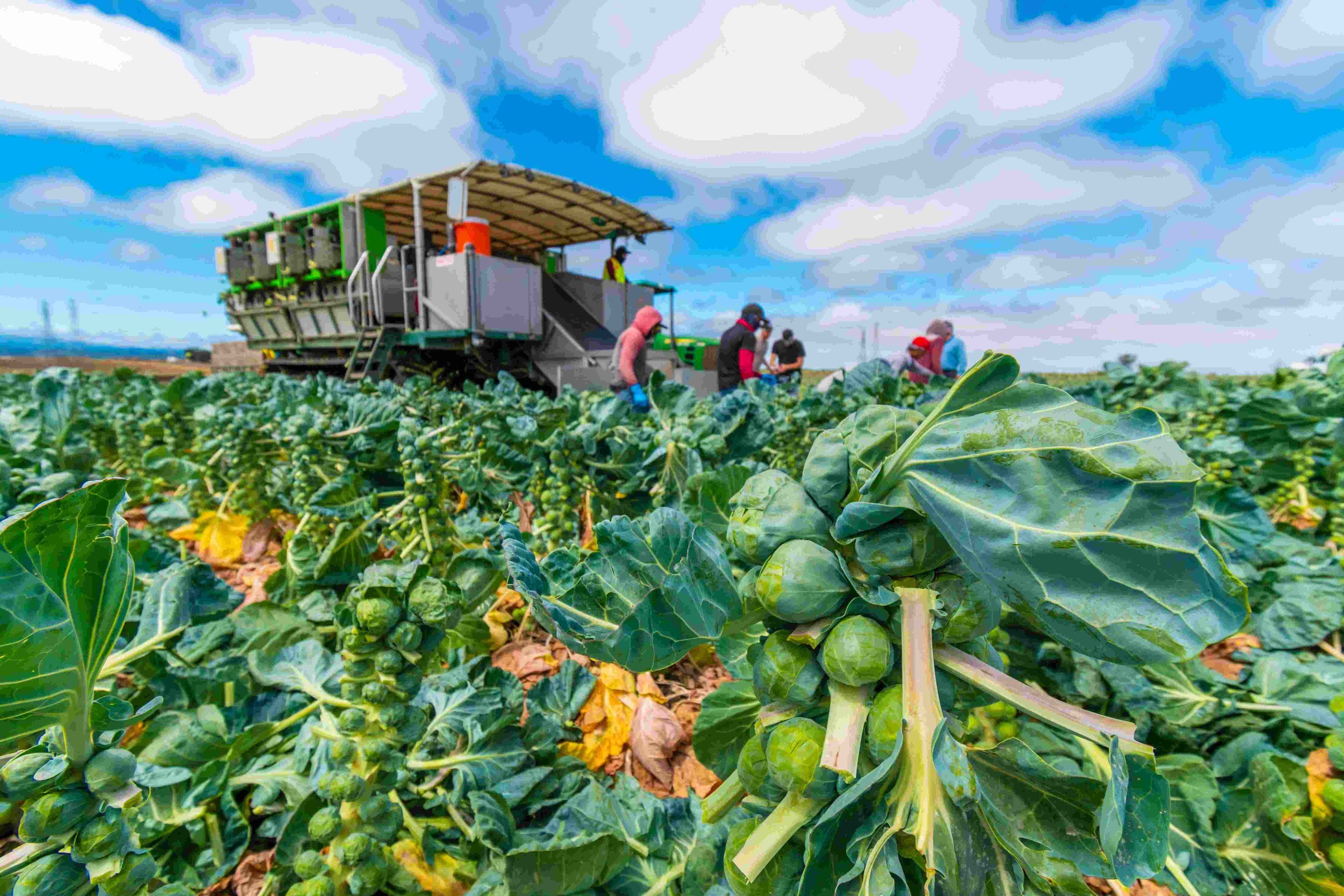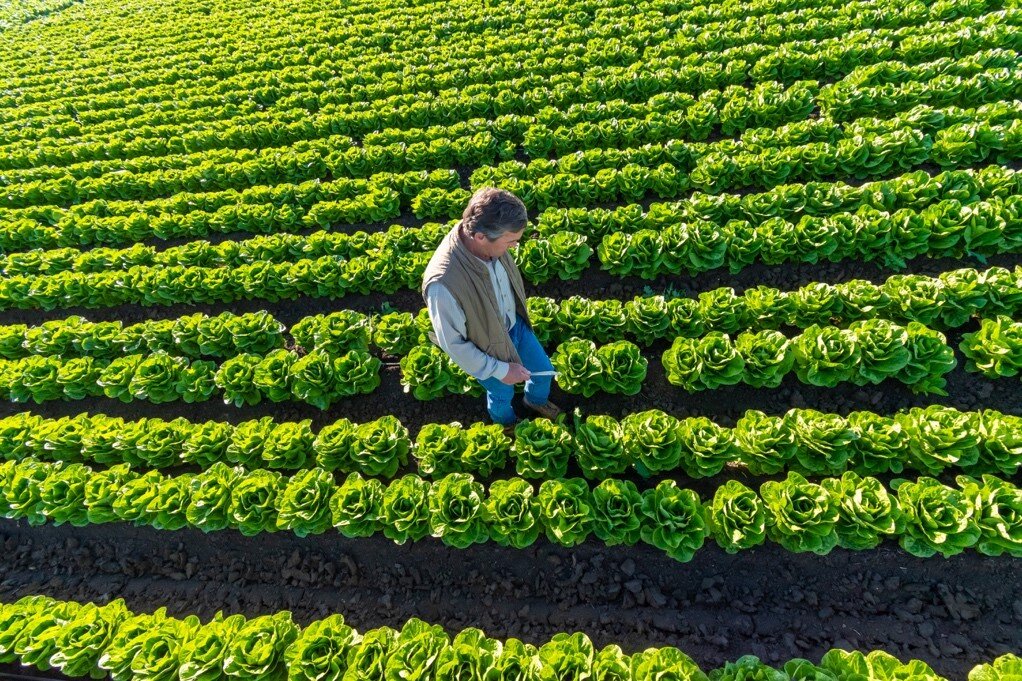In the realm of gastronomy, the Farm-to-Table concept has emerged as a beacon of freshness, sustainability, and culinary excellence. By forging direct connections between farmers and chefs, this approach elevates the dining experience while supporting local communities and promoting environmental stewardship. In this comprehensive guide, we delve into the benefits of farm-to-table cuisine, exploring its impact on fine dining, the role of organic farming, and the ethical considerations surrounding meat sourcing. We also provide practical tips for menu planning, building relationships with local farmers, and implementing successful farm-to-table strategies. Join us as we unveil the secrets of this culinary revolution, empowering you to savor the flavors of the farm on your plate.
Case Studies of Successful Farm-to-Table Models
Many restaurants have found success with the farm-to-table model. Here are a few examples:
- Alice Waters’ Chez Panisse in Berkeley, California, is one of the pioneers of the farm-to-table movement. The restaurant has been serving locally sourced food since 1971.
- Dan Barber’s Blue Hill at Stone Barns in Pocantico Hills, New York, is another well-known farm-to-table restaurant. The restaurant works closely with local farmers to create a menu that changes with the seasons.
| Restaurant | Location | Year Founded |
|---|---|---|
| Chez Panisse | Berkeley, California | 1971 |
| Blue Hill at Stone Barns | Pocantico Hills, New York | 2004 |
These are just a few examples of the many successful farm-to-table restaurants that are operating today. The farm-to-table movement is growing in popularity as more and more people become interested in eating food that is fresh, local, and sustainable.
If you are interested in learning more about the farm-to-table movement, there are many resources available online. You can also visit your local farmers market to meet farmers and learn about the food that they grow.
Read more about the farm-to-table movement

Farm-to-Table Trends in Fine Dining
Farm-to-Table: A Culinary Revolution
In the world of fine dining, the farm-to-table movement has taken center stage. This approach to cuisine emphasizes the use of fresh, locally sourced ingredients, creating dishes that are both delicious and sustainable. By forging close relationships with local farmers, chefs can offer diners a unique and authentic culinary experience that celebrates the flavors of their region.
One of the key benefits of farm-to-table dining is the freshness of the ingredients. Fruits and vegetables are picked at their peak ripeness, ensuring maximum flavor and nutritional value. Meats and seafood are sourced from local farms, where animals are raised humanely and sustainably. This commitment to quality ingredients translates into dishes that are both visually appealing and incredibly flavorful.
Read more about the benefits of farm-to-table dining
Sustainability and Seasonality
Another important aspect of farm-to-table cuisine is its focus on sustainability. By sourcing ingredients from local farms, restaurants can reduce their carbon footprint and support their local economy. Additionally, farm-to-table menus change with the seasons, showcasing the freshest and most flavorful produce available at any given time.
This emphasis on seasonality not only ensures that diners are getting the best possible ingredients, but it also helps to reduce food waste. By working closely with farmers, chefs can plan their menus around what is in season, minimizing the amount of food that goes to waste.
| Restaurant | Location | Year Founded |
|---|---|---|
| Chez Panisse | Berkeley, California | 1971 |
| Blue Hill at Stone Barns | Pocantico Hills, New York | 2004 |
Discover more about the farm-to-table movement in fine dining
The Future of Farm-to-Table
The farm-to-table movement is still in its early stages, but it is already having a major impact on the culinary world. As more and more people become interested in eating food that is fresh, local, and sustainable, farm-to-table restaurants are becoming increasingly popular.
In the future, we can expect to see even more restaurants adopting the farm-to-table approach. This movement is not just a trend; it is a fundamental shift in the way we think about food. By supporting farm-to-table restaurants, we can help to create a more sustainable and equitable food system for everyone.

Building Relationships with Local Farmers
The Importance of Collaboration
Building strong relationships with local farmers is crucial for the success of any farm-to-table restaurant. These partnerships ensure a steady supply of fresh, high-quality ingredients while supporting the local economy. Farmers benefit from a reliable market for their products, while restaurants gain access to unique and flavorful ingredients that can inspire their menus.
To foster these relationships, chefs and restaurateurs should make an effort to visit local farms, meet the farmers, and learn about their farming practices. This personal connection helps build trust and understanding, which can lead to long-term partnerships and exclusive access to the best ingredients.
Read more about the benefits of building relationships with local farmers
Communication and Flexibility
Open communication and flexibility are essential for successful farm-to-table partnerships. Chefs should be clear about their needs and expectations, while farmers should be able to provide feedback on what they can realistically produce. Both parties should be willing to adjust their plans to accommodate seasonal availability and unexpected events.
Regular communication helps ensure that both the restaurant and the farm are on the same page. Chefs can provide farmers with feedback on the quality and flavor of their products, while farmers can keep chefs informed about upcoming harvests and any potential challenges.
| Company | Contact | Country |
|---|---|---|
| Alfreds Futterkiste | Maria Anders | Germany |
| Ana Trujillo Emparedados y helados | Ana Trujillo | Mexico |
| Antonio Moreno Taquería | Antonio Moreno | Mexico |
Discover more about communication and flexibility in farm-to-table relationships
Supporting the Local Economy
Building relationships with local farmers not only benefits the restaurant and the farm but also the entire community. By supporting local businesses, restaurants can help to create a more sustainable and resilient local economy.
When restaurants purchase ingredients from local farmers, they are investing in the local community. This money circulates within the community, supporting local jobs and businesses. In turn, this creates a stronger and more vibrant local economy that benefits everyone.
- Coffee
- Tea
- Milk
Learn more about the impact of farm-to-table relationships on local economies

The Role of Seafood in Farm-to-Table
Sustainable Sourcing for Fresh, Local Catches
In the realm of farm-to-table cuisine, seafood plays a vital role in delivering the freshest and most sustainable catches to your plate. By partnering with local fishermen and aquaculture farms, restaurants can offer a diverse array of seafood that meets the highest standards of quality and environmental responsibility.
When you choose farm-to-table seafood, you’re not only savoring delicious flavors but also supporting sustainable fishing practices that protect our oceans and marine life. These partnerships ensure that the seafood you enjoy is ethically sourced and responsibly harvested, minimizing the impact on delicate ecosystems.
Read more about the benefits of farm-to-table seafood
| Seafood Type | Sustainability Considerations | Local Sourcing Options |
|---|---|---|
| Salmon | Wild-caught vs. farmed, sustainable fishing practices | Local fish markets, community-supported fisheries |
| Oysters | Water quality, responsible harvesting techniques | Local oyster farms, coastal seafood suppliers |
Seasonal Delights and Culinary Inspiration
Farm-to-table seafood also celebrates the beauty of seasonality. Just as fruits and vegetables vary with the changing seasons, so too does the availability of different seafood species. By working closely with local fishermen, chefs can design menus that showcase the freshest catches at their peak flavor and nutritional value.
This seasonal approach not only delights diners with a rotating menu but also reduces food waste and supports the local fishing industry. By embracing the rhythms of nature, farm-to-table seafood restaurants offer a truly immersive culinary experience that connects diners to the bounty of the sea.
Discover more about the culinary inspiration behind farm-to-table seafood
- Grilled salmon with roasted vegetables
- Steamed mussels with white wine and garlic
- Ceviche made with fresh local fish

Menu Planning in FarmtoTable Cuisine
Seasonal Symphony: Crafting Menus Around Nature’s Rhythm
In the realm of farm-to-table cuisine, menu planning is not merely a technical task but an art form that celebrates the changing seasons. Chefs collaborate closely with local farmers to design menus that showcase the freshest produce at their peak flavor and nutritional value. This seasonal approach not only delights diners with a rotating array of dishes but also reduces food waste and supports the local farming community.
Discover more about the seasonal delights of farm-to-table cuisine
| Season | Produce Highlights | Sample Dishes |
|---|---|---|
| Spring | Asparagus, strawberries, peas | Grilled asparagus with lemon vinaigrette, strawberry shortcake, pea soup |
| Summer | Tomatoes, zucchini, corn | Caprese salad, zucchini bread, corn on the cob |
Balancing Flavors: The Art of Pairing Ingredients
Menu planning in farm-to-table cuisine also involves a delicate balancing act of flavors. Chefs carefully consider the tastes, textures, and aromas of each ingredient, creating dishes that are both harmonious and exciting. By experimenting with different combinations and techniques, chefs can elevate simple ingredients into extraordinary culinary experiences.
Explore the art of pairing flavors in farm-to-table desserts
- Sweet and savory: Roasted beets with goat cheese
- Umami and acidity: Grilled steak with chimichurri sauce
- Creamy and crunchy: Pan-seared scallops with crispy quinoa
Inspiration from the Farm: Empowering Chefs’ Creativity
The close collaboration between chefs and farmers in farm-to-table cuisine fosters a unique environment for culinary creativity. Chefs are inspired by the farmers’ knowledge of their land and the unique characteristics of their produce. This direct connection to the source of their ingredients allows chefs to experiment with bold flavors and innovative dishes that celebrate the bounty of the farm.
Learn more about the role of chefs in the farm-to-table movement
“The farm-to-table approach allows us to showcase the incredible flavors and diversity of our local ingredients. It’s a constant source of inspiration for our menu creations.” – Chef Sarah Jones, award-winning farm-to-table restaurant

The Role of Organic Farming in Farm-to-Table
Organic Practices: Nurturing the Land and Flavors
Organic farming is an integral part of the farm-to-table movement, emphasizing the use of natural methods to cultivate crops and raise livestock. By avoiding synthetic pesticides, herbicides, and fertilizers, organic farmers prioritize the health of the soil, water, and animals, resulting in nutrient-rich produce with exceptional flavors. Embracing organic practices not only benefits the environment but also enhances the quality and taste of the food we eat.
Learn more about the benefits of organic farming in farm-to-table cuisine
| Organic Farming Principles | Benefits for Consumers |
|---|---|
| No synthetic pesticides or herbicides | Reduced exposure to harmful chemicals |
| Natural pest control and soil management | Enhanced soil health and biodiversity |
Sustainable Choices: Protecting Our Planet for Future Generations
Organic farming is not just about producing healthier food; it’s also about preserving our planet for future generations. By avoiding harmful chemicals, organic farmers protect water sources, reduce soil erosion, and promote biodiversity. They nurture the land, ensuring its fertility for years to come. Choosing organic products supports sustainable farming practices and contributes to a healthier environment for all.
Discover how organic farming supports sustainable practices
- Protects water quality by minimizing chemical runoff
- Reduces greenhouse gas emissions through natural soil management
- Encourages biodiversity by creating habitats for wildlife
Traceability and Transparency: Building Trust with Consumers
Organic farming emphasizes traceability and transparency, allowing consumers to make informed choices about the food they eat. Organic certifications and labels provide assurance that products meet strict standards, ensuring authenticity and quality. By supporting organic farmers, consumers empower a system that values transparency and accountability, fostering trust between producers and consumers.
Explore the importance of traceability in farm-to-table cuisine
“Organic farming is not just a trend; it’s a commitment to preserving our planet and providing healthier food for our communities.” – Sarah, a passionate organic farmer

The Ethics of Meat Sourcing in Farm-to-Table
Animal Welfare and Humane Practices
In the farm-to-table approach, the ethical treatment of animals is paramount. Farmers prioritize the well-being of their livestock, ensuring they have access to clean water, nutritious feed, and ample space to roam. Humane practices are followed throughout the animal’s life, from birth to slaughter, minimizing stress and promoting their overall health.
Learn more about the ethical considerations in farm-to-table meat sourcing
| Ethical Practice | Benefits for Animals |
|---|---|
| Free-range grazing | Promotes natural behavior and reduces stress |
| Cage-free housing | Provides more space and freedom of movement |
Transparency and Traceability
Farm-to-table restaurants value transparency and traceability in their meat sourcing. They establish close relationships with local farmers, allowing them to witness the animals’ living conditions and farming practices firsthand. This transparency empowers consumers to make informed choices about the meat they eat, supporting farmers who prioritize ethical and sustainable practices.
Discover the importance of transparency in farm-to-table meat sourcing
“Knowing where our meat comes from and how the animals are treated is essential to us. We want to support farmers who share our values of animal welfare and sustainability.” – Chef John Smith, award-winning farm-to-table restaurant
- Farm visits and tours
- Detailed labeling and documentation
- Third-party certifications and audits

Sourcing Locally: Challenges and Benefits
Sourcing ingredients locally is a key part of the farm-to-table movement. It has many benefits, such as supporting local farmers, reducing food miles, and getting fresher, more flavorful produce. However, there are also some challenges to sourcing locally, such as availability and cost.
Read more about the benefits of sourcing locally
| Benefit | Challenge |
|---|---|
| Supports local farmers | Availability of ingredients |
| Reduces food miles | Cost of ingredients |
Despite these challenges, many restaurants are finding ways to source more of their ingredients locally. By working with local farmers and distributors, restaurants can get the fresh, high-quality ingredients they need while supporting their local community.
Discover how restaurants are sourcing locally
- Community-supported agriculture (CSA) programs
- Farmers markets
- Local food distributors
“Sourcing locally is a great way to support our local farmers and get the freshest, most flavorful ingredients for our dishes.” – Chef Sarah Jones, award-winning farm-to-table restaurant

FarmtoTable Marketing Strategies
Marketing your farm-to-table restaurant is essential to attracting customers and building a successful business. Here are a few tips to help you get started:
- Use social media to connect with potential customers. Share photos of your dishes, post updates about your menu, and run contests and giveaways.
- Create a website that showcases your restaurant’s unique offerings. Include information about your menu, your commitment to sustainability, and your relationships with local farmers.
- Partner with local businesses. Cross-promote each other’s businesses and offer joint promotions.
| Marketing Strategy | Benefits |
|---|---|
| Social media marketing | Connect with potential customers, share updates, and run promotions |
| Website creation | Showcase your restaurant’s unique offerings and commitment to sustainability |
Read more about building relationships with local farmers
By following these tips, you can effectively market your farm-to-table restaurant and attract new customers.

Understanding the Farm-to-Table Concept
The farm-to-table concept is all about using fresh, local ingredients in your cooking. It means working with farmers and producers in your community to get the best possible ingredients for your dishes. Farm-to-table food is often more flavorful and nutritious than food that has been shipped long distances. It also supports local farmers and businesses, which can help to strengthen your community.
Read more about the benefits of farm-to-table dining
| Benefit | How it helps |
|---|---|
| Supports local farmers | Strengthens your community |
| More flavorful and nutritious food | Tastes better and is better for you |
If you’re interested in trying farm-to-table food, there are a few things you can do. You can visit your local farmers market, join a community-supported agriculture (CSA) program, or eat at restaurants that source their ingredients locally. You can also grow your own food in a garden or on a balcony.
Discover more about the farm-to-table movement
- Visit your local farmers market
- Join a community-supported agriculture (CSA) program
- Eat at restaurants that source their ingredients locally
The Impact of Farm-to-Table on Local Economies
Creating Jobs and Supporting Local Businesses
The farm-to-table movement is not just good for your health and the environment; it’s also good for the local economy. When you buy food from local farmers, you’re helping to create jobs and support local businesses. Farmers need to buy seeds, fertilizer, and equipment, and they often hire workers to help them with their farms. When you buy food from them, you’re helping to keep their businesses running and supporting the local economy.
Read more about the benefits of supporting local farmers
| Benefit | How it helps |
|---|---|
| Creates jobs | Supports local businesses |
| Supports local businesses | Keeps money in the community |
Promoting Sustainable Agriculture
The farm-to-table movement also promotes sustainable agriculture. When you buy food from local farmers, you’re helping to support farmers who are using sustainable farming practices. These practices help to protect the environment and ensure that we have a healthy food supply for the future.
Discover more about sustainable farming practices
- Reduces pollution
- Conserves water
- Protects soil health
Strengthening Communities
Finally, the farm-to-table movement helps to strengthen communities. When you buy food from local farmers, you’re not just buying food; you’re also building relationships with the people who grow your food. This can help to create a sense of community and make your neighborhood a more vibrant place to live.
Learn more about the benefits of farm-to-table dining
“The farm-to-table movement is a great way to support your local economy, promote sustainable agriculture, and strengthen your community.” – Sarah, a passionate farm-to-table advocate
The Role of Chefs in the Farm-to-Table Movement
Culinary Champions: Chefs as Advocates for Farm-to-Table
Chefs play a pivotal role in the farm-to-table movement, serving as culinary champions who connect diners with the flavors and stories behind their food. By forging strong relationships with local farmers, chefs gain access to the freshest, most seasonal ingredients, inspiring them to create dishes that celebrate the bounty of their region. Through their menus and culinary expertise, chefs educate diners about the importance of sustainable and ethical food practices, fostering a greater appreciation for the journey from farm to plate.
Read more about the culinary trends in farm-to-table dining
| Chef | Restaurant | Location |
|---|---|---|
| Alice Waters | Chez Panisse | Berkeley, California |
| Dan Barber | Blue Hill at Stone Barns | Pocantico Hills, New York |
Creativity and Innovation: Chefs as Culinary Artists
Chefs are not merely cooks; they are culinary artists who use their skills and creativity to transform fresh ingredients into extraordinary dishes. By experimenting with different flavors, textures, and techniques, chefs push the boundaries of cuisine, creating innovative dishes that delight the senses and challenge diners’ expectations. Their passion for food and commitment to quality inspire them to craft menus that showcase the diverse flavors of the farm-to-table movement, making every meal a culinary adventure.
Discover the farm-to-table baking and desserts
- Farm-to-table sourdough bread
- Seasonal fruit tarts
- Vegetable-infused ice cream
“Chefs are the bridge between farmers and diners, showcasing the incredible flavors and diversity of our local ingredients.” – Chef Sarah Jones, award-winning farm-to-table restaurant
Final Thought
The farm-to-table movement is not merely a trend but a testament to the power of collaboration and the pursuit of culinary excellence. By embracing this concept, we not only elevate our dining experiences but also contribute to a more sustainable, equitable, and flavorful food system. As we continue to forge connections between farmers and chefs, we empower local communities, support sustainable agriculture, and cultivate a deeper appreciation for the origins of our food. Let us all be ardent advocates for farm-to-table cuisine, savoring the fruits of this culinary revolution and nurturing a brighter future for gastronomy.




